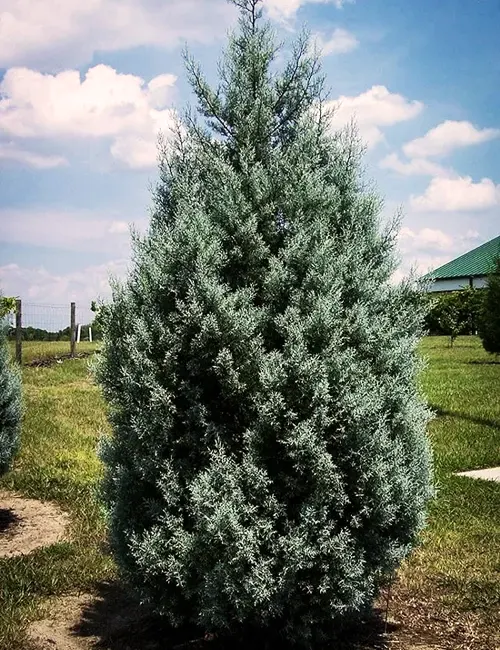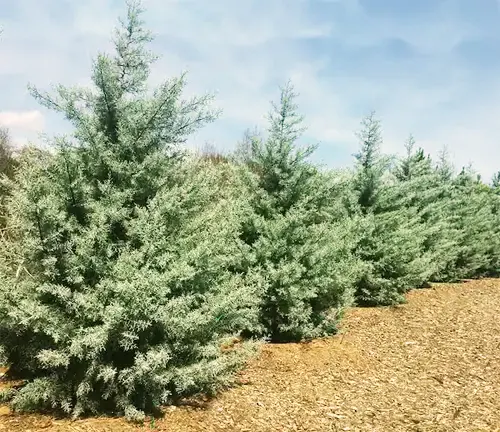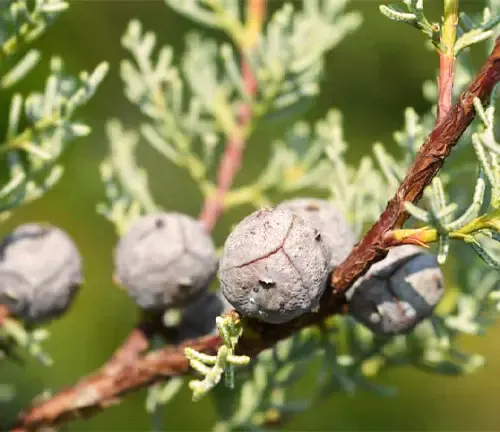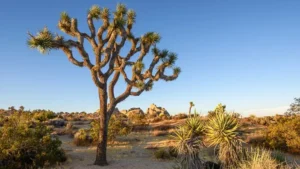Arizona Cypress Tree
- June 13, 2023
- 0 comment

Common Name: Arizona cypress or smooth Arizona cypress.
Botanical Name: Cupressus arizonica.
Family: Cupressaceae family.
Plant Type: evergreen coniferous tree
The Arizona Cypress (Cupressus arizonica) is a stunning evergreen tree known for its tall and slender form. With silvery-blue to gray-green scale-like leaves, it adds a unique touch to any landscape. This resilient tree thrives in well-drained soils and full sun, making it an ideal choice for gardens, privacy screens, and windbreaks. Its adaptability, wildlife value, and low maintenance requirements make it a popular and visually appealing addition to outdoor spaces.

Mature Size and Growth Rate
The Arizona Cypress can grow up to 40-60 feet tall, with a spread of about 10-20 feet, exhibiting a medium growth rate.
Soil Type
It thrives in well-drained soils, including sandy, loamy, or rocky soils.

Hardiness Zones
The Arizona Cypress is hardy in USDA zones 7-9, making it well-suited for regions with mild to moderate climates.
Sun Preference
This tree prefers full sun exposure, although it can tolerate some shade.
Attributes
The Arizona Cypress boasts several attractive attributes, including silvery-blue to gray-green scale-like leaves and a narrow and upright form, making it suitable for privacy screens, windbreaks, or focal points in gardens.

Wildlife Value
The Arizona Cypress provides valuable habitat for various wildlife species, offering shelter and nesting sites for birds and serving as a food source for birds and small mammals through its seeds and cones.

Care
Caring for an Arizona Cypress involves regular watering during dry periods, especially in the first few years after planting, and applying mulch to retain moisture and suppress weed growth.
Benefits
The Arizona Cypress enhances the aesthetic appeal of landscapes with its unique foliage color and form, reduces soil erosion, provides shade, acts as a windbreak, and maintains its evergreen beauty throughout the year.
Invasive
The Arizona Cypress is not considered invasive in its native range or in most regions where it is cultivated.
Lifespan
On average, the Arizona Cypress has a lifespan of 40-50 years, although some trees can live longer with proper care and growing conditions.
Disadvantage
One potential disadvantage of the Arizona Cypress is its susceptibility to root rot in poorly drained soils, requiring proper soil drainage to prevent this issue.

Edible or Not
The Arizona Cypress is not typically consumed by humans, despite its pleasant fragrance, and is not recommended for culinary purposes.
Habitat Requirements
The Arizona Cypress thrives in areas with full sun exposure and well-drained soils, adapting well to dry, arid climates and tolerating periods of drought once established.
Name Origin
The name “Arizona Cypress” is derived from its native range, primarily in the southwestern United States, including Arizona and parts of New Mexico.
Fun Facts
The Arizona Cypress is known for its ability to withstand drought and adapt to harsh conditions, making it a resilient tree, while its wood is highly valued for its durability and resistance to decay, making it popular for outdoor construction.

Characteristics
The Arizona Cypress features a pyramidal shape with dense foliage, consisting of silvery-blue to gray-green scale-like leaves arranged in flattened sprays, adding a unique and striking appearance to the landscape.
Varieties
Cultivated varieties of the Arizona Cypress include ‘Blue Ice’ with bluer foliage, ‘Carolina Sapphire’ with bright blue foliage, and ‘Glauca’ with silvery-blue foliage.
Pruning
Pruning for the Arizona Cypress is generally minimal, but if desired for shaping or maintenance, it is best done in late winter or early spring before new growth begins.
Propagating
The Arizona Cypress can be propagated through seeds collected from mature cones and sown in a well-drained medium, or through softwood or semi-hardwood cuttings taken during specific seasons.
Common Pests & Diseases
The Arizona Cypress is generally resistant to many pests and diseases, but it can be susceptible to root rot in poorly drained soils. Regular inspection and proper care can help prevent and manage potential issues.
Frequently Asked Questions:
- Can I grow an Arizona Cypress in a container?
While young Arizona Cypress trees can be grown in containers, they eventually outgrow them due to their size and growth rate, making them better suited for open landscapes.
- How fast does the Arizona Cypress grow?
The Arizona Cypress has a medium growth rate, typically growing 1-2 feet per year under ideal conditions.

John Carlos
Forestry AuthorThe beauty of logging isn't just about felling trees. It's about understanding nature, mastering the art of chainsaws, and respecting the environment. I believe in sharing my experiences and knowledge, ensuring that we move towards a sustainable future together.













Leave your comment